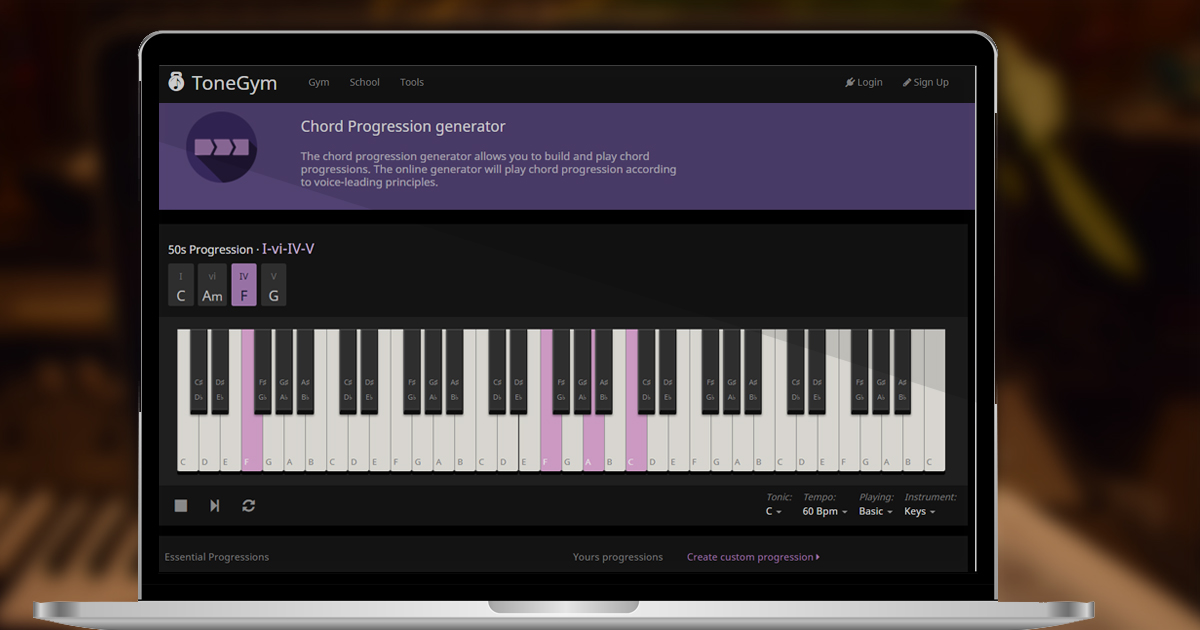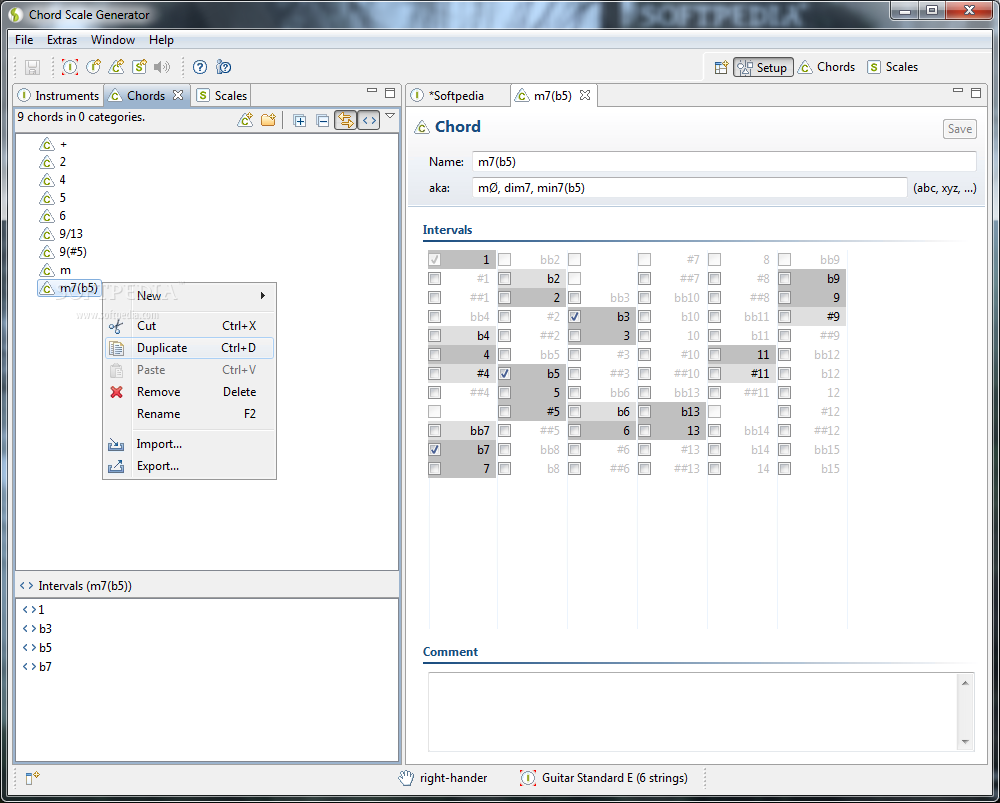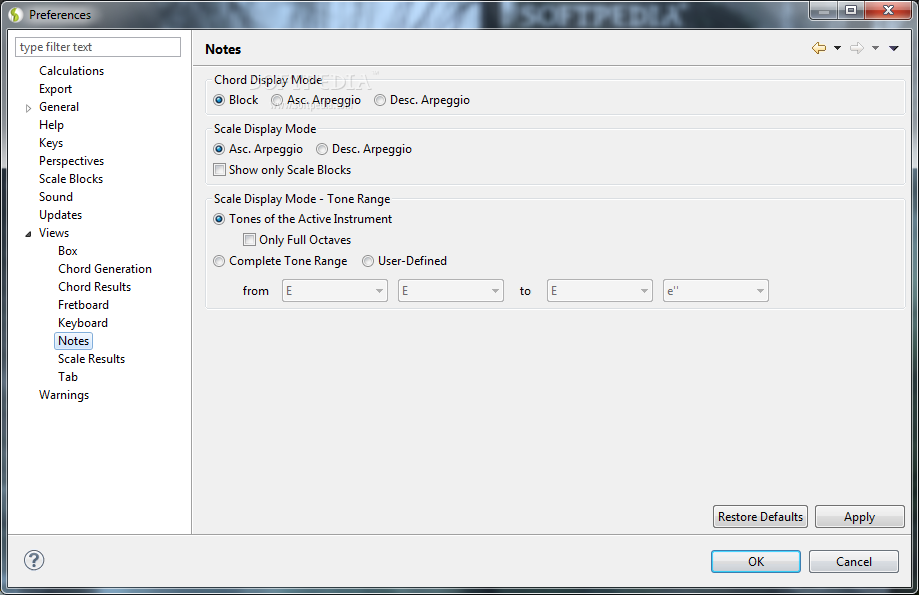

If you take the 1, 3, 5 of the major scale(using numbers 1,5,8) It makes a major chord. As you can see, the base pattern gives you all the notes without #'s or b's This is called a major scale. Using the base pattern starting with 1, 1+2=3 3+2=5 5+1=6 6+2=8 and so on. A "b" means subtract one and a "#" means add 1. If I wanted 1, b3, 5 the pattern would be 1, 5, 8. If I were to break down those numbers into specific patterns my 1,3,5 pattern would be 1, 6, 8 in relation to the numbers. If you were to think of notes as numbers I would have numbers 1-13. The best part of Scales & Chords is that the results you get in this way will very often be melodies and progressions you’d never previously have considered using, making this one of Reason’s most creative tools.It is similar but at the same time very different.
Chord scale generator. how to#
However, in the following workshop, we’ll show you how to create a great chord progression and then generate a melody from that, so showing off its songwriting credentials. There are further chordal options in Scales & Chords where inversions play different notes in a chord.

Again, as you have set the key and scale, all of the chords you generate with a single note press will sound fine, so this is a fantastic way to generate and experiment with chord progressions. You can have these set up to five notes per chord and have Reason set to record either that single note or the chord results. Now, turning to the Chords section, you can generate chords within your chosen scale simply by pressing one note. You can then either play the correct notes, and learn that particular scale along the way… however, if you play the wrong notes you can choose to have it automatically play the nearest correct note in place, or play nothing at all – you simply can’t play a wrong note! Scales & Chords will show you the notes that exist in your chosen key and scale by highlighting them over an octave.

The first thing we’ll demo in this tutorial is the simple selection of a key and scale. You can even set it up so that if you play a wrong note, it will play the right one in the context of the key and scale chosen! It won’t go wrong The best part is that that’s all you need to know about them for the moment, because the main point of Scales & Chords is that whatever scale you choose, what you then play next should always sound good. They might sound more natural and familiar in the case of major and minor scales, or more unfamiliar if you choose some of the scales used in music from around the world. The scale type simply defines what sequence of notes is played around that root note. The simplest is C Major, where the root note is C and you simply play the white notes on your keyboard, up towards the next C. If you are a complete beginner, think of a musical scale as a sequence of notes that you play, one after another. You then get to choose from a list of scales, some well known (like major and minor) and others not so well known (Mixolydian, anyone?). With Scales you choose the key of the song that you want to work in from a menu of 12 (the root notes in an octave). You can think of Scales & Chords in two halves: the left-hand blue Scale area and right-hand green Chord area. As we’ve hinted at though, the best thing about Scales & Chords is that you don’t need to know your scales from your chords! In fact, that is (kind of) the point! Essentially, what Scales & Chords allows you to do is experiment with chord progressions and play and record notes within certain keys, without hitting bum notes. It sits in front of any noise maker, taking the MIDI notes you play, acting on them and sending the results into your chosen instrument.

The Scales & Chords player was introduced as one of three Player Devices in Reason 9 (the others being Note Echo and Dual Arpeggio). And as it’s a songwriting special this issue, we’re going to focus on one key Reason feature that will help you create great songs, without needing to know anything about, well, creating great songs! This time, then, we are talking about the mighty Scales & Chords player. However, most sequencers also have very specific components for songwriting, many of which often get ignored as we focus on the headline acts. With most DAWs, there is also the very basic fact that it is so easy to copy and paste parts to create songs that you can come up with arrangements very quickly. With Reason, it’s the rack that we often get sidetracked by, with the sheer number of instruments and effects that we can have plumbed into our mixer for the ultimate virtual studio. There are so many bonuses to using DAWs in music production that sometimes it can get overwhelming and you end up just focusing on certain key elements.


 0 kommentar(er)
0 kommentar(er)
